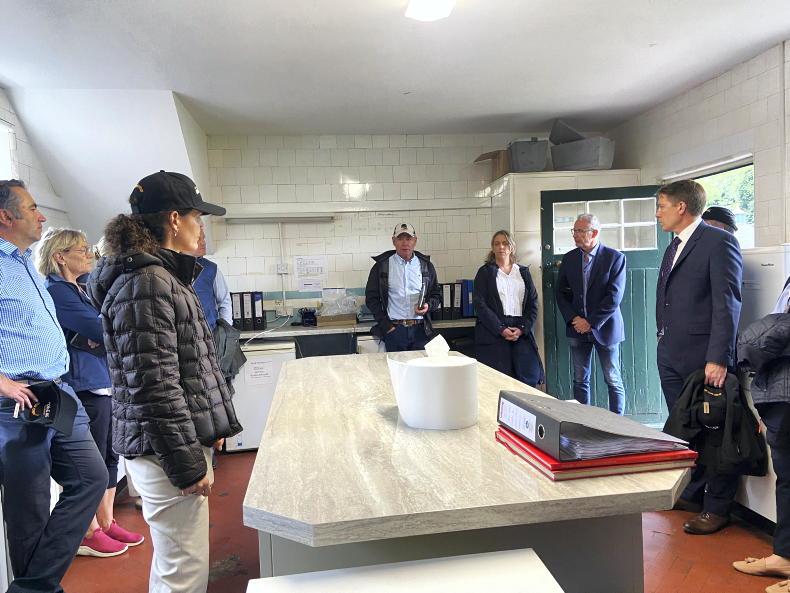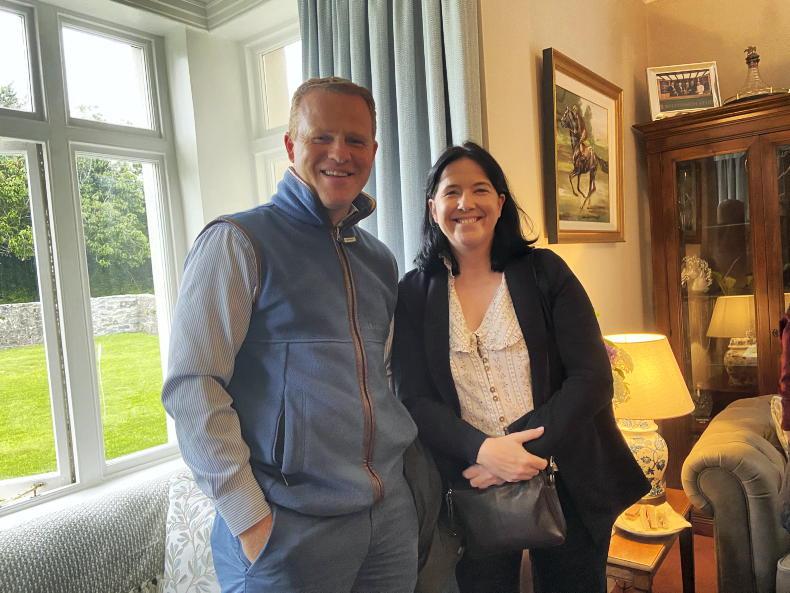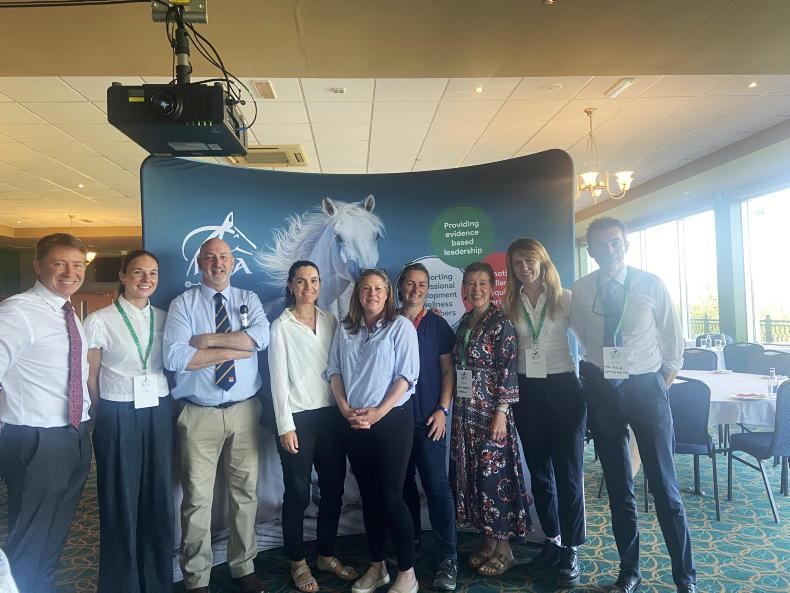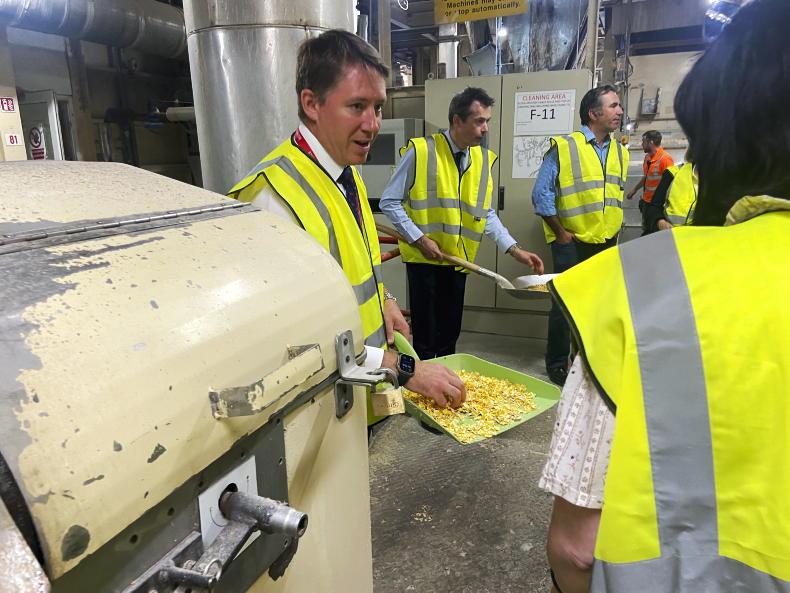AMERICAN regulatory vet, Dr Alina Vale, who specialises in equine welfare and forensics, gave a fascinating and candid account of the events that shook Californian racing in 2019 - and the reforms that followed.
A cluster of fatalities at Santa Anita Park, including 22 catastrophic musculoskeletal injuries, triggered criminal and regulatory investigations. “If the District Attorney’s office hadn’t got involved, I don’t think the racing industry would have taken that next step,” Dr Vale said. Public concern put the sport’s social licence in jeopardy, forcing change.
Key findings from the California Horse Racing Board review revealed that most fatalities involved pre-existing pathology - often invisible in training - and were likely linked to high-intensity exercise. Other contributing factors included inconsistent track surfaces following unusually heavy rainfall and, in some cases, pressure on trainers to run horses sooner than advisable.
In response, more than 60 welfare and safety recommendations were implemented, including:
The introduction of PET scanning, post-mortem review programmes, and trainer education sessions have, according to Dr Vale, been vital in preventing repeat incidents. “It’s not about blame,” she stressed. “It’s about empowering trainers to work with their vets and recognise the subtle signs before it’s too late.”
Dr Vale also shared examples where fatality reviews led to immediate changes, such as padding steel gateposts and retraining stable staff after handling accidents. She emphasised that transparency - with redacted review summaries published online - is critical for maintaining public trust.
Looking ahead, she urged the industry to learn internationally: “If one jurisdiction sees more proximal sesamoid fractures, another more pastern fractures, what can we share to prevent them? The goal is always the same - to give the racehorse a long career, a timely retirement, and a life worth living.”
DR Sorcha O’Connor, equine nutritionist and vet from Connolly’s Red Mills, delivered a lively, practical session on how feeding directly impacts horse health, welfare and performance.
“Prevention is the start of all of this,” she stressed. “Nutrition can be one of the foundation blocks for preventing a lot of problems and giving our horses the lives they deserve.”
Horses, she reminded the audience, are trickle feeders with small stomachs and a digestive system designed for constant intake. Prolonged gaps without forage increase the risk of ulcers, colic and behavioural stress. “They should be chewing for up to 18 hours a day. At the end of the day, it comes back to good-quality hay.”
Core welfare principles - the “three Fs” - were central to her talk: friends, forage and freedom. Horses need social contact, high-fibre diets and regular turnout to maintain both physical and mental health.
Among the key points:
O’Connor also highlighted emerging research linking a diverse gut microbiome to improved performance and earnings. “We know foals with more fibre in the diet and fewer antibiotics early in life go on to win more prize money. That’s the power of the microbiome.”
Her final message was simple: “Forage, forage, forage. Feed according to work rate, choose quality ingredients, and avoid unnecessary supplements and medications.
“Go back to basics - your horse will thank you.”
EQUINE behaviourist Dr Orla Doherty delivered a thought-provoking and well-received talk on training, handling and behaviour, urging the industry to embrace modern science over centuries-old tradition.
“The horse’s brain is the same whether we’re talking about a miniature, a Grand Prix show jumper or a racehorse,” she began. “The types of learning are the same - and the science now tells us how to get the best results with less stress for both horse and human.”
Doherty argued that advances in genetics, nutrition and surfaces have outpaced progress in behavioural science in the equestrian world. “Training and behaviour knowledge lags way behind,” she warned, “and yet it has a massive impact on safety, welfare and performance.”
She emphasised that many so-called “problem” behaviours - napping, jogging, barging - are learned and often unintentionally rewarded. “Horses aren’t bold or bad. They’re simply doing what works for them. If a behaviour brings a good outcome, they will repeat it - and that’s how habits are formed.” The cornerstone of effective training, she explained, lies in understanding operant conditioning (associating behaviour with outcome) and classical conditioning (associating two events).
“Pressure and release - what science calls negative reinforcement - is something you all do daily,” she said. “Used correctly, it’s one of the most powerful tools we have. Combine it with rewards, like food or wither scratching, and you not only train the response, you make the horse feel good about doing it.”
Dr Doherty cautioned against over-reliance on punishment, noting that delayed or poorly timed corrections often create fear rather than learning. “We should be aiming to produce horses that are calm, compliant and safe to handle - from the mounting block to the veterinary exam.”
Her message was as much about mindset as mechanics: “It’s up to us to teach the correct response. The more we understand how horses learn, the quicker we can train behaviours that last a lifetime, reduce risk, and give horses a better life.”
For Doherty, the path forward is clear: “If we embrace the science, whatever discipline we’re in, we will get better outcomes - for performance, safety, welfare and for the horse’s long-term future.”
FOR Connolly’s Red Mills’ UK head nutritionist Louise Jones, the focus turned to feed safety and the ever-present risk of prohibited substances in equine diets. Connolly’s Red Mills are a BETA NOPS Working Party member, and Jones highlighted how contamination can occur, how the feed industry works to prevent it, and the steps trainers and owners can take on their own yards.
A prohibited substance, the audience was reminded, is any ingredient banned under the relevant sporting authority’s rules. Lists differ slightly between bodies such as the IHRB and FEI, but the consequences of a positive test are the same - loss of prize money, damaged reputation, and potentially costly legal battles.
The risk is not theoretical. “It really doesn’t take much,” Jones warned. “Just one gram of poppy seeds could trigger a positive for morphine, while as few as 10 peanut M&Ms could register caffeine and theobromine for up to 48 hours.”
Some substances occur naturally in raw ingredients, others enter feed via cross-contamination at harvesting, storage, or transport. The 2002 morphine contamination case, and more recently zilpaterol in molasses, were cited as industry-wide wake-up calls that led to tighter controls.
Since 2009, the BETA NOPS Code has provided an independently audited framework for minimising the risk of naturally occurring prohibited substances. Accredited feed companies must monitor their supply chain, audit suppliers, and test both raw materials and finished feeds using forensic-grade equipment. Intelligence on emerging risks is shared across the industry.Trainers and owners can play a crucial role. Jones urged attendees to:
“By choosing the right supplier and tightening best practice on the yard, you reduce the chances of a positive test dramatically.
“Feed safety isn’t just about the mill – it’s about everyone in the chain doing their part.”
of racehorse recovery
The spotlight turned to practical nutrition strategies for post-race recovery, with a clear message: feed with purpose in the 48 hours after exertion.
Nutritionist Nicole Groyer of Connolly’s Red Mills outlined the “four Rs” of recovery - replenish glycogen, rehydrate, repair muscle, and re-establish gut health. Carbohydrate stores, especially muscle glycogen, are the main energy source for high-intensity exercise. but can take 24-48 hours to fully restore in horses. “Depletion can reduce anaerobic capacity by up to 60% in subsequent work,” the audience was told. Rest, ad-lib forage, small meals and timely electrolyte supplementation were recommended to speed replenishment.
High-quality protein is vital for repairing micro-tears and supporting muscle adaptation. Soybean meal was highlighted as an excellent lysine source, with branched-chain amino acids (valine, isoleucine, leucine) and L-carnitine also linked to improved recovery and delayed fatigue. Antioxidants such as vitamin E, selenium and CoQ10 help counter oxidative stress, reducing stiffness and inflammation.
Rehydration was another priority. “Horses can’t rehydrate on water alone,” the audience heard. Sweating leads to electrolyte as well as fluid loss, and replacement is critical for muscle contraction, nerve function and digestion. Frequent small drinks once cooled, plus electrolyte supplementation, were advised. Forage plays a dual role, acting “like a sponge” to hold water in the gut.
Gut health underpins performance and recovery. Factors such as fasting before racing, high-starch meals, stress and dehydration can lead to ulcers, hindgut acidosis and disrupted microbiota. Groyer recommended constant access to quality forage to create a ‘fibre mat’ in the stomach, preventing acid splash during exercise, alongside targeted gut supplements (pre-, pro- and postbiotics) where needed.
Two case studies illustrated applied feeding plans:
The take-home? Recovery is an active process. “If you get it wrong, you risk performance loss and injury. Get it right, and you give your horse the best chance to come back stronger,” the presenter concluded.
SPEAKING for a second time, Dr Alina Vale praised the work already being done by organisations such as Horse Racing Ireland and the IHRB, but urged the industry to think beyond race day.
“It’s the other 23 hours that create the positive outcomes you see on the track,” she stressed. Drawing on the American Association of Equine Practitioners’ (AAEP) equine welfare principles, she defined good welfare as horses being healthy, comfortable, well-nourished, safe, able to express natural behaviours and free from pain, fear and distress.
The Five Domains model was presented as a framework for reducing avoidable negative experiences and ensuring racehorses enjoy “a life worth living” throughout their careers and beyond.
The speaker outlined findings from a pilot racehorse welfare assessment, which measured behaviour, physical indicators and stable environment. Parameters included reactivity to humans, tack and rub marks, mouth lesions, nasal/eye discharge, body condition score, box openings for environmental stimulation, bedding quality, forage access, social contact, pain indicators, stereotypic behaviours, and turnout opportunities.
Simple management changes, she noted, can have big welfare impacts - from improving bedding depth for REM sleep, to adding windows between boxes for social contact, to ensuring constant access to quality forage. “In too many places, particularly under strict pre-race regimes, feed and water are still removed far too early,” she warned.
Turnout was flagged as a particular weakness in some jurisdictions. “In parts of the US, racehorses may never see a grass paddock in their career,” she said, highlighting the need for safe, well-managed turnout as part of everyday welfare.
The presentation also addressed aftercare, emphasising the owner’s responsibility to secure a suitable second career or retirement. The speaker voiced concern about the growing number of surgically-repaired horses - such as those with fetlock arthrodesis - and questioned whether enough homes could accommodate their long-term needs.
Euthanasia guidelines from the AAEP were reviewed, with the message that humane death is preferable to prolonged suffering or risky long-distance transport for slaughter. Transport standards, including maximum travel times and rest/water intervals, were also discussed. Dr Vale challenged attendees to identify one change they could make immediately to improve welfare in their own yard - and to consider which welfare parameters should be part of future assessments
Draft IHRB welfare and safety standards shared
Lynn Hillyer, chief veterinary officer at IHRB, gave the first public outline of the new Irish Thoroughbred Welfare and Safety Standards. The new Standards come under specific objectives in the IHRB Satement of Strategy welfare pillars, and they are now entering industry consultation.
The first notable measure is a clear emphasis on responsible veterinary care. Medicines should be used “judiciously, when they need to be used,” Hillyer said, with veterinary professionals “front and centre” in all decisions. Hillyer stressed the aim is not to restrict necessary treatment, but to ensure it is always carried out legally, appropriately, and with the horse’s long-term welfare in mind.
The second proposed change is a stronger duty of care when a horse leaves a trainer’s yard. Trainers and owners would be required to know, and stand over, where the horse is going, who is responsible for its transport, and the conditions in which it will travel. “This might sound ambitious, but it has to happen,” Hillyer said, adding that it was “responsible for our industry to make this happen” in light of recent public concerns. The draft standards will now undergo “proper consultation” with the wider industry in the coming months.
ON what turned out to be one of the hottest days in Ireland this year, Dr David Marlin, one of the equine world’s leading scientists, delivered a stark and practical message: racing in hot conditions requires more than common sense - it requires science, preparation and urgency.
“Whether you believe climate change is new or not, it doesn’t matter,” Marlin began. “We are having more heatwaves, and racing needs to adapt.” He pointed to nine major European heatwaves in the last five years, compared with just three or four in the previous three decades.
Horses, he explained, produce heat three to five times faster than humans during exercise. “For every unit of energy a muscle uses to move, four times as much is released as heat. During a race, muscle temperature can rise by one and a half degrees every minute.” Because they have proportionally less surface area for cooling than smaller animals, thoroughbreds rely heavily on sweating - but blood flow to the skin drops sharply when galloping, prioritising the muscles instead.
This design helps a horse outrun predators, but creates a welfare problem in competition. “A horse can hit 43°C inside. It can tolerate that for a few minutes, but after 10-15 minutes, damage begins - to the brain, the gut, the muscles.” Heat stress can cause fatigue, collapse, abnormal heart rhythms, and, hours later, colic or laminitis.
Risk factors identified from British Horseracing Authority data include long travel in warm weather, afternoon racing (three times the risk compared to evenings), sudden temperature spikes without acclimatisation, longer or faster races, and soft going. “In Britain, we see around 36 recorded cases of heat-related issues in racing each year - but it’s often misdiagnosed,” he noted. “If a horse colics after a hot race, people don’t always connect the dots.”
His advice was unequivocal: cool first, ask questions later. “The single best thing you can do is get cold water on the horse, continuously, over the whole body. Forget scraping - you’re just wasting time. Don’t be afraid of overcooling. I’ve yet to see a horse die from being cooled too much.” Walking the horse in wide circles keeps blood returning to the heart and aids recovery.
Marlin debunked common myths: cold water does not cause muscle damage, shock, laminitis, or heart attacks, and leaving a horse wet does not ‘insulate’ heat in. Buckets, hoses, misting fans, ice - all have a role, but “nothing beats a steady flow of cold water”.
Prevention, he stressed, is equally important. “If you train early in the morning when it’s cool, then race in the heat, your horse is at a disadvantage and at greater risk. Two weeks of training in warmer parts of the day gives about 90% of heat acclimatisation.”
Other measures include rescheduling races to cooler times, avoiding dark artificial tracks on hot days, and monitoring environmental stress with a Wet Bulb Globe Temperature (WBGT) meter - “they cost a couple of hundred pounds and give you all the information you need”.
Beyond welfare, Marlin warned that visible heat distress damages public perception. “In the age of social media, the image of a wobbly horse standing in the sun while everyone else is celebrating is a gift to critics. Managing heat well isn’t just about the horse - it’s about racing’s social licence to operate.”
His closing message was clear and urgent: “Early recognition and decisive cooling save lives. There is no excuse not to get this right.”
AS the final session drew to a close, one thing was clear—A Good Life - Well Lived Summit had delivered a wealth of practical, immediately applicable insights from some of the most knowledgeable voices in the field.
From nutritional science to welfare-led management strategies, the advice shared over the two days was rooted in real-world experience and backed by the latest research. Yet, while the content was exceptional, the attendance numbers from across the wider equine industry were not as high as they could—and should—have been.
If the sector is serious about advancing the welfare and performance of our horses, showing up to learn, engage, and apply this knowledge is not optional—it’s a responsibility. Progress depends on open ears, open minds, and a shared willingness to put the horse first.


 This is a subscriber-only article
This is a subscriber-only article
 It looks like you're browsing in private mode
It looks like you're browsing in private mode










SHARING OPTIONS: